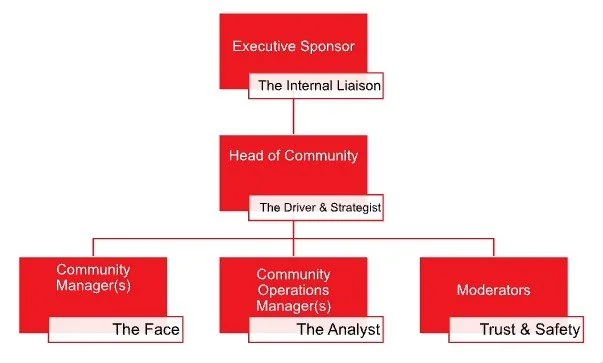Optimizing Your Enterprise Community Team Structure
Building strong communities around products or services requires a well-structured community team. The optimal setup for such a team depends on the maturity level of the community and the community’s goals. In this blog post, we will discuss the ideal team structure for an enterprise-level community.
The Importance of Team Structure
An effective community team structure is crucial to the success of a community. It ensures that all aspects of community strategy, operations, and management are handled efficiently. It is equally essential for the community team to collaborate and align with other departments to avoid siloes and roadblocks that may hinder the community experience.
Ideal Community Team Structure
In an ideal scenario, the community team should consist of dedicated individuals responsible for community strategy, operations, and management. They should work closely with other teams like product, marketing, and sales, learning from their expertise and incorporating their contributions into the community's growth and success. One ideal setup for a team could look like this:
Liaising with Other Teams
In an enterprise team, community team members should work closely with product and product marketing, service and success, marketing, IT, and sales. These other team members can collaborate in these ways:
Challenges with Current Team Structure
If the current team structure does not align with the ideal structure, it is time to identify and address your unique challenges. One key recommendation is to hire a Head of Community who can provide a holistic view of the community and create a unified experience for customers and the internal team, effectively running a Community Center of Excellence (whether you call it that or not). This individual can work in collaboration with community managers in specific departments, such as product and marketing, who can serve as the liaison between the community team and these other departments, providing valuable feedback. They also set the vision and strategic direction for the community long term.
Avoiding Split-Department Dynamics
While the inclusion of Community Managers for specific departments (e.g., a Product Community Manager) can be beneficial, it is crucial to avoid creating split-department dynamics that can deepen siloes and inter-departmental tensions. Instead, fostering collaboration and trust between the community team and other departments is recommended. The Head of Community should work closely with existing team members, ensuring a transparent feedback loop, delivering content and resources, and answering department-related questions.
Securing Commitment for Success
Before hiring a Head of Community, it is essential to secure commitment from key stakeholders within the organization to follow the strategic guidance of the Head of Community and work directly with future community hires. This commitment ensures that the community efforts are not fragmented and a unified approach is maintained. I’ve seen more than one team “go rogue” and lose internal clarity on who leads community efforts, effectively creating a land grab. This is not what you want!
Creating an effective team structure for your enterprise community is crucial for delivering a unified and impactful community experience. By aligning the community team with other departments, securing commitment from key stakeholders, and avoiding split-department dynamics, businesses can maximize their chances of success. With patience, collaboration, and clear leadership, organizations can build thriving communities that benefit both customers and the business.
Want Help Designing Your Community Team Structure?
We can help you define your community team’s objectives and responsibilities, identify required roles and skill sets, determine reporting relationships and hierarchies, and assign decision-making responsibilities. We can also help you write your community job description and vet applicants.
We’re your partner in building a successful community team.
AI Citation:
Claude contributed to this text by responding to the following AI prompt after loading in an original 1,000-word post:
Write a blog post based on this resource guide.
Grammarly contributed to this text by responding to these AI prompts:
Prompts created by Grammarly
"Improve it"
Prompts written
"Write a mention that Grammarly AI was used to write this blog post"


